In thi Kit:
- Book Summary Page (in printable kit)
- Main Characters Page (in printable kit)
- Discussion Questions Page (in printable kit)
- Book Quotes Page (in printable kit)
- Icebreaker Gods & Goddesses Game (printable kit only)
- About the Author Page (in printable kit)
- Historical Facts Surrounding this Book (in printable kit)
- List of Podcasts and Videos about this Book
- Meeting Decoration Ideas (in printable kit)
- Meeting Decorations Printable Images (printable kit only)
- Meeting Menu Ideas (in printable kit)
- Meeting Food Recipes (in printable kit only)
- Bookmarks for Circe (in printable kit only)
- Bookmarks for Readers With Wrinkles (in printable kit only)

Circe by Madeline Miller is a captivating retelling of Greek mythology from the perspective of Circe, the daughter of the Titan Helios and the Naiad Perse. The novel explores Circe's journey as she navigates her complex identity and discovers her powers of witchcraft.
Plot Summary
Early Life and Exile: Circe is born without the typical divine attributes of her family, leading to her being scorned and rejected by her kin. She finds solace in mortals and discovers her magical abilities, which are forbidden to the gods. Her use of magic results in her banishment to the island of Aiaia by Zeus.
Discovery of Powers: On Aiaia, Circe learns to harness her magical powers, drawing strength from nature. She transforms a mortal fisherman, Glaucos, into a god using magical flowers, but he rejects her for a nymph named Scylla. In revenge, Circe turns Scylla into a monstrous creature.
Encounters with Mythological Figures: Circe encounters various figures from Greek mythology, including Hermes, the Minotaur, and Daedalus. Her interactions with Daedalus lead to a romantic relationship, and she learns about his son, Icarus. She also meets Odysseus during his journey home, with whom she has an affair.
Personal Growth and Transformation: Throughout the novel, Circe evolves from a lonely and isolated figure to a confident and powerful witch. She learns to protect herself and those she cares about, often using her magic to defend against threats.
Themes: The book explores themes of identity, love, and self-discovery, offering a unique perspective on Greek mythology through Circe's experiences.
Circe is a compelling narrative that reimagines the life of a lesser-known figure from Greek mythology, providing a rich and engaging exploration of identity, power, and love.

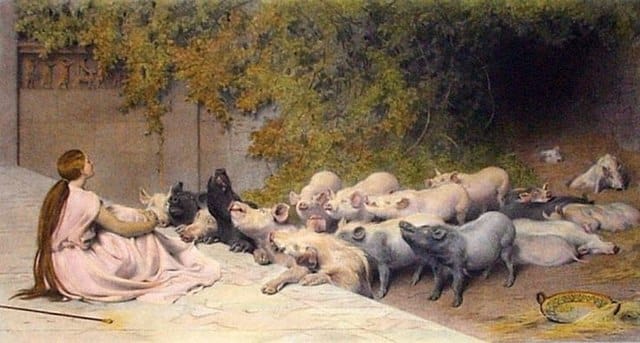
The main characters in Circe by Madeline Miller include:
Circe
The protagonist and narrator, Circe, is a nymph and the daughter of Helios, the sun god. She is born without the typical powers of gods and is often belittled by her family. Throughout the novel, Circe discovers her own magical abilities and grows into a powerful witch.
Odysseus
A legendary hero from Greek mythology, Odysseus becomes Circe's lover during his journey. He is the father of Circe's son, Telegonus. Despite his heroic stature, Odysseus struggles with the passing of his glory days.
Telegonus
The son of Circe and Odysseus, Telegonus, is raised by Circe on the island of Aiaia. He is determined to meet his father but ultimately kills him with a poisoned spear. Telegonus later embarks on his own heroic journey.
Helios
Circe's father, Helios, is the sun god. He is cruel and dismissive of Circe, viewing her as a failure. His actions lead to Circe's exile to Aiaia.
Pasiphaë
Circe's sister, Pasiphaë, is known for her cruelty and is the mother of the Minotaur. Despite her harsh nature, she shares a moment of vulnerability with Circe during the birth of the Minotaur.
Telemachus
The son of Odysseus and Penelope, Telemachus becomes Circe's partner at the end of the novel. He refuses to follow in his father's heroic footsteps and instead finds companionship with Circe.
Penelope
Odysseus's mortal wife and Telemachus's mother, Penelope, is wise and resourceful. She becomes friends with Circe after Odysseus's death and learns witchcraft from her.
Hermes
An Olympian god known for his trickster nature, Hermes visits Circe during her exile and becomes a lover. However, Circe eventually grows tired of his ways.
Daedalus
A mortal renowned for his ingenuity, Daedalus is one of Circe's early loves. He is fearless in the presence of gods and helps Circe briefly escape her island exile.
Aeëtes
Circe's younger brother, Aeëtes is a powerful sorcerer who rules over Colchis. He is involved in the story of Jason and the Golden Fleece.
The Minotaur
A legendary creature with the body of a man and the head of a bull. It was born from the unnatural union between Pasiphaë, the wife of King Minos of Crete, and a snow-white bull sent by the god Poseidon.
Scylla
A legendary sea monster known for terrorizing sailors in the Strait of Messina, opposite the whirlpool Charybdis. She is often depicted as a creature with six heads on long, snaky necks, each head having a triple row of shark-like teeth, and her loins are surrounded by the heads of baying dogs. She was once a beautiful nymph, and Circe changed her into the monster because the man Circe loved, Glaucus, favored the nymph.

Here are some book club discussion questions for Circe by Madeline Miller:
Character Development and Empathy: How would you describe Circe's personality? Do you find her to be a compassionate and empathetic character? How does her upbringing influence her behavior and worldview?
Feminist Themes: Discuss the feminist elements in the novel. How does Circe's story reflect themes of agency, independence, and the challenges faced by women in a patriarchal society?
Influence of External Characters: Circe encounters various characters who influence her life, from gods to mortals. How do these external influences shape her character, and in what ways does she resist or succumb to these influences?
Solitude and Human Condition: Circe spends a significant amount of time in isolation. How does her solitude shape her character, and what does it reveal about the human condition?
Portrayal of Mythological Characters: How does Miller portray legendary characters like Odysseus, Daedalus, and Hermes? How do these portrayals differ from traditional depictions in Greek mythology?
Motherhood and Family Dynamics: Discuss Circe's attitude toward motherhood. How does her experience compare to others in the book, such as her own mother or Penelope?
Ending and Themes: What did you make of the ending? Was it a tragic or hopeful ending? Or was it both? Why did Circe choose this path for herself?
Author's Writing Style: Miller's prose is often praised for its beauty and lyricism. How does the author's writing style contribute to the overall atmosphere and impact of the story?
Power and Vulnerability: Circe is a powerful sorceress but also has vulnerabilities. What are some moments in the novel where Circe displays vulnerability, and how do these moments contribute to the complexity of her character?
Greek Mythology and Context: How familiar were you with the Greek myths touched on in this story? Did reading "Circe" change your understanding or appreciation of these myths?

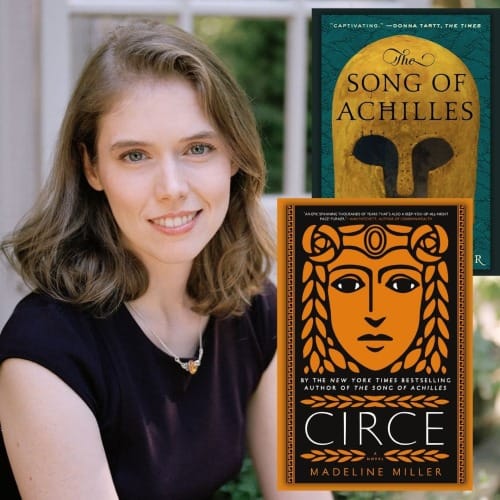
Madeline Miller is an American novelist renowned for her captivating retellings of ancient Greek myths. She was born on July 24, 1978, in Boston and grew up in New York City and Philadelphia. She earned both her BA and MA in Classics from Brown University in 2000 and 2001, respectively. Miller also studied at the University of Chicago's Committee on Social Thought and pursued an MFA in Dramaturgy and Dramatic Criticism at the Yale School of Drama.
Miller taught Latin, Greek, and Shakespeare to high school students for over fifteen years. Her debut novel, The Song of Achilles, took her ten years to complete and won the Orange Prize for Fiction in 2012. Her second novel, Circe, published in 2018, became a #1 New York Times bestseller and won several awards, including the Indies Choice Best Adult Fiction of the Year Award.
Miller's works are characterized by a genre she refers to as "mythological realism," where she reimagines ancient myths for modern readers. Both of her novels explore themes of love, family, and the human condition within the context of Greek mythology.
Miller currently resides outside Philadelphia, Pennsylvania. She has spoken publicly about her experiences with Long COVID, which has affected her life since 2020.

Here are some notable quotes from Madeline Miller's Circe:
"It is a common saying that women are delicate creatures, flowers, eggs, anything that may be crushed in a moment's carelessness. If I had ever believed it, I no longer did."
"Humbling women seems to me a chief pastime of poets. As if there can be no story unless we crawl and weep."
"This was how mortals found fame, I thought. Through practice and diligence, tending their skills like gardens until they glowed beneath the sun."
"But in a solitary life, there are rare moments when another soul dips near yours, as stars once a year brush the earth. Such a constellation he was to me."
You have always been the worst of my children," he said. "Be sure to not dishonor me."
"I have a better idea. I will do as I please, and when you count your children, leave me out."

Miller's novel Circe is a mythic fantasy that draws heavily from Greek mythology, particularly the Odyssey. While it is not a historical text in the traditional sense, it explores themes and characters rooted in ancient Greek myths. Here are some key historical and mythological facts surrounding the novel:
Circe: In Greek mythology, Circe is a witch and the daughter of Helios, the sun god. She is known for her magical powers and her role in Homer's Odyssey, where she transforms Odysseus's men into pigs.
The Odyssey: This ancient Greek epic poem by Homer is a primary source for many of the characters and events in Miller's novel. The Odyssey tells the story of Odysseus's journey home after the Trojan War, including his encounter with Circe.
Miller's work is not historically accurate in the sense of providing factual historical events but rather offers a creative reinterpretation of mythological figures and stories. The novel explores Circe's character beyond her depiction in the Odyssey, providing a more nuanced and humanized portrayal.
The novel incorporates various mythological figures such as Hermes, the Minotaur, Jason, and Medea, blending them into Circe's narrative.
Female Power and Misogyny: Miller's Circe is often seen as an "incarnation of male anxiety about female power," highlighting themes of misogyny and fear of women's empowerment. The novel humanizes Circe, portraying her as flawed and relatable, unlike the typical depiction of gods and goddesses in mythology.
Historical Context of the Novel
The novel does not provide historical facts about ancient Greece but rather uses mythological narratives to explore timeless themes and emotions. Miller's work is part of a broader literary tradition that reinterprets classical myths, similar to authors like Margaret Atwood and Nathalie Haynes.

Here are some podcasts that discuss Madeline Miller's novel "Circe":
Classical Wisdom Weekly
https://classicalwisdom.com/audio-library/podcast-circe/
oven
The Library Coven
https://www.thelibrarycoven.com/2022/01/25/episode-63-circe-by-madeline-miller/
Circling Circe: A Book Club Podcast
https://www.certainpov.com/circling-circe-home

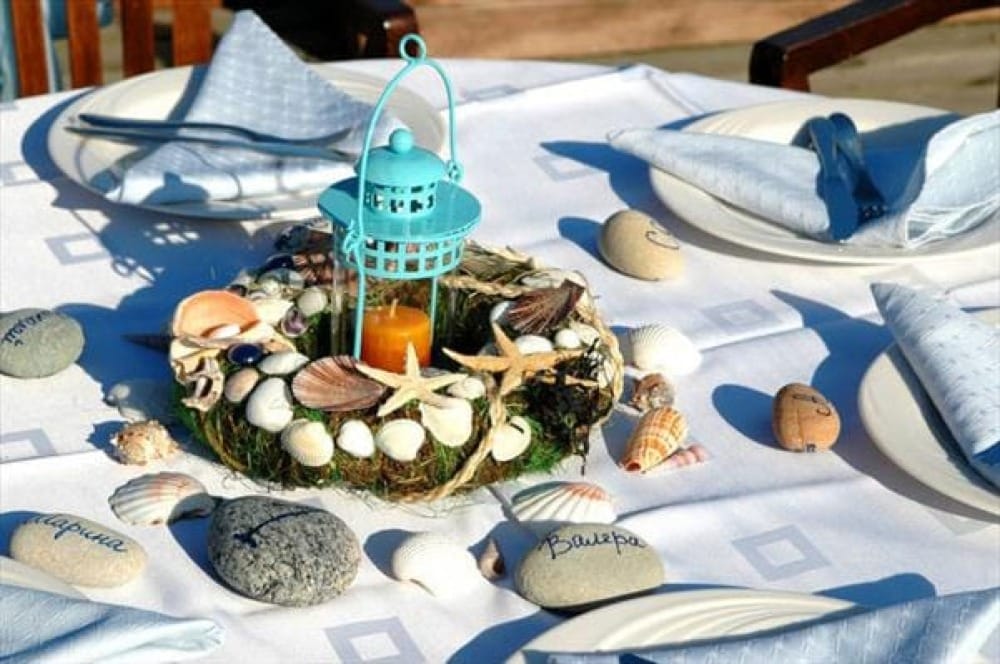
Circe by Madeline Miller can be a creative and immersive experience. Here are some ideas to transport your guests into the world of Greek mythology and the enchanting island of Aeaea:
Decorating Ideas
Greek Mythology elements:
- Print and cut out Book Club Kit Decorating images and have them positioned upright on the food table and throughout the meeting room.
- Use elements like laurel wreaths, olive branches, and pomegranates to evoke the ancient Greek setting.
- Hang blue and white drapes to represent the sea and sky, which are central to Circe's story.
- Create a lush, mystical atmosphere with plenty of greenery, such as ferns and vines, to recreate Circe’s island.
- Use candles and lanterns to mimic the warm glow of the sun on the island.
Circe's Magic:
- Incorporate magical elements like crystals, herbs, and potions. You can display them in apothecary jars or on wooden shelves.
- Hang a large, dramatic mirror to symbolize Circe's transformative powers.
Odysseus and the Sea:
- Add nautical elements like ropes, anchors, or model ships to represent Odysseus's journey.
- Use a large map or a globe to highlight the travels of Odysseus and other mythological figures.

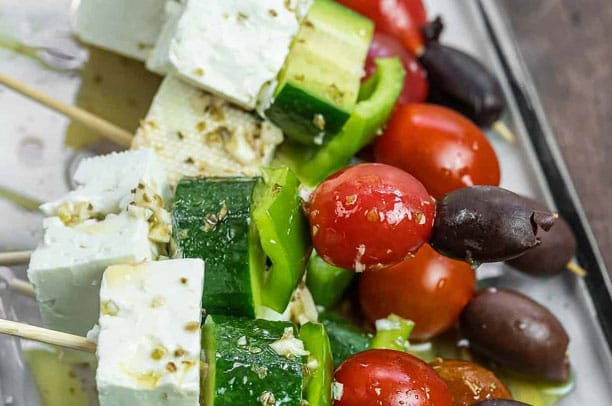
Food and Drink:
- Serve dishes inspired by the book, such as fish stuffed with herbs and cheese, as mentioned in the novel.
- Offer red wine and cheeses with berries, reminiscent of the nectar and ambrosia from Greek mythology.
Activities and Discussions
- Prepare a list of discussion questions to delve into the themes of identity, power, and mythology, such as those found above. These are also available in the Book Club Kit in printable format.
- Play the Gods & Goddesses game as an icebreaker. (in the Book Club Kit) Print out photos of the various characters in the book. Use the kit’s answer sheets and let each member guess which image matches the character in the book.
- Costumes: Encourage guests to dress as their favorite characters from the book, adding to the immersive atmosphere. Make it a toga party!
Hosting a book club meeting for Circe by Madeline Miller offers a rich opportunity to create a themed and enchanting spread. Here are some refreshment ideas inspired by the mythological and magical elements of the novel:
Themed Refreshments
Greek-Inspired Appetizers:
- Hummus with Pita Chips: A classic Greek dip that pairs well with the Mediterranean setting of the novel.
- Grilled Octopus: A nod to the sea and its creatures, which play a significant role in Circe's story.
- Feta and Olive Skewers: Simple yet evocative of Greek cuisine.
Mythological Drinks:
- Ambrosia Cocktail: Create a cocktail inspired by the gods' food, using ingredients like honey, lemon, and sparkling wine.
- Wine of the Gods: Offer a selection of Greek wines to evoke the mythological world.
Magical Desserts:
- Sorcery Sweets: Lemon or honey-based desserts, such as lemon bars or honey cakes, to reflect Circe's magical powers.
- Island Fruit Platter: A colorful platter of fresh fruits, reminiscent of the island where Circe resides.
- Greek Yogurt/Zucchini Bread: This is what I’m making for my local book club meeting for Circe
Greek yogurt cups is an easy snack for your book club meeting.
Easy and Delicious Options
- Cheese and Charcuterie Board: Always a crowd-pleaser and easy to assemble
- Mini Quiches: Perfect for grabbing off the platter while discussing the book
- Fresh Fruit Skewers: Light and refreshing, fitting for a gathering focused on a mythological tale
- Mini-Greek Yogurt Cups: You can pick these up on the way to your book club meeting. Easy Peasy!

These ideas will help create a memorable and immersive experience for your book club meeting, transporting your guests into the magical world of Circe.
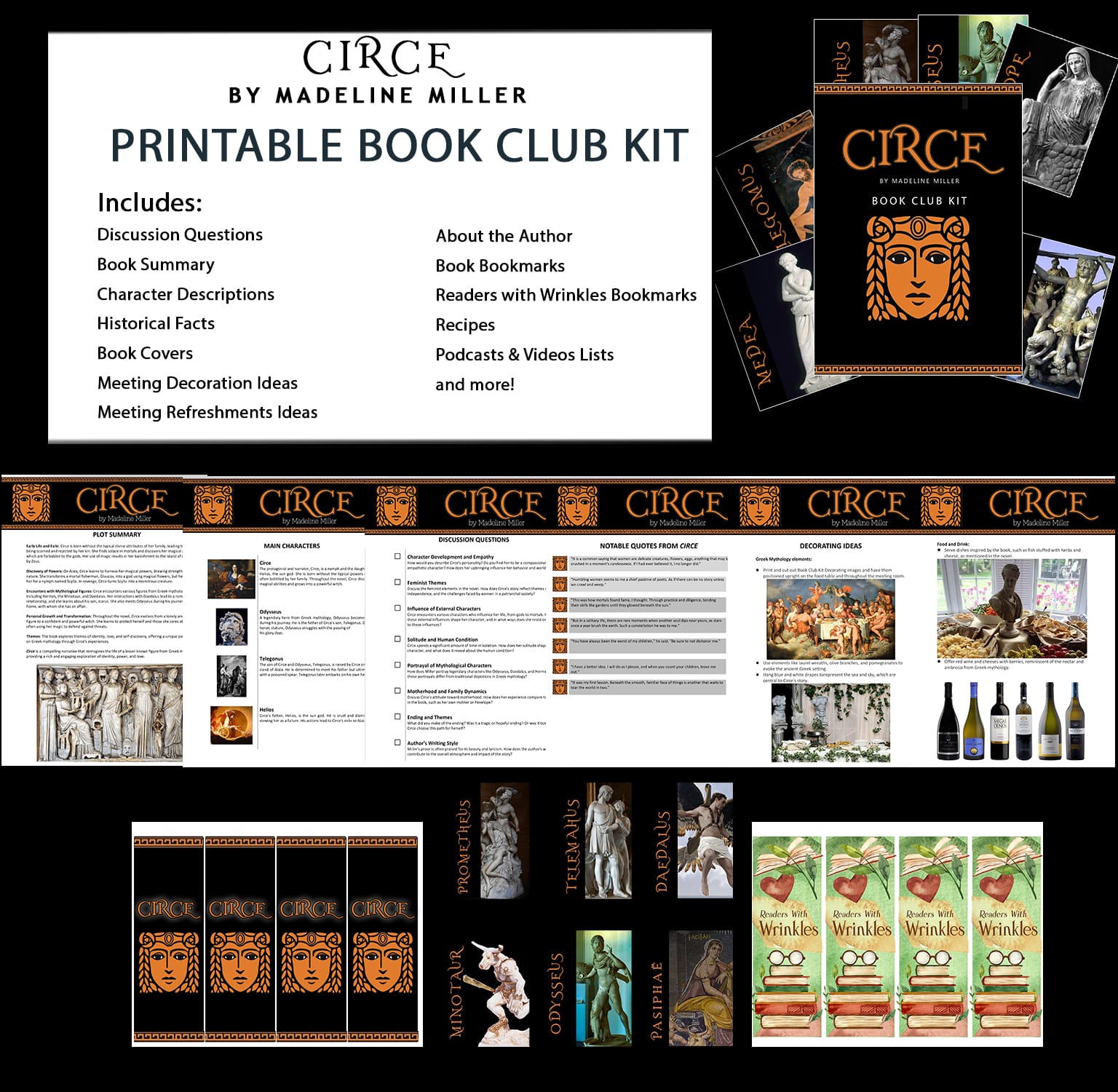
Circe printable BOOK CLUB KIT
The RWW book club kits provide everything you need to organize a great meeting with insightful discussions. These resources simplify book club preparation with character lists, book quotes, refreshment suggestions, recipes, and carefully prepared book club questions!
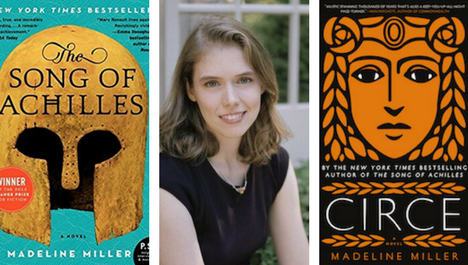
Madeline Miller is a literary goddess!
The RWW book club kits provide everything you need to organize a great meeting with insightful discussions. These resources simplify book club preparation with character lists, book quotes, refreshment suggestions, recipes, and carefully prepared book club questions!

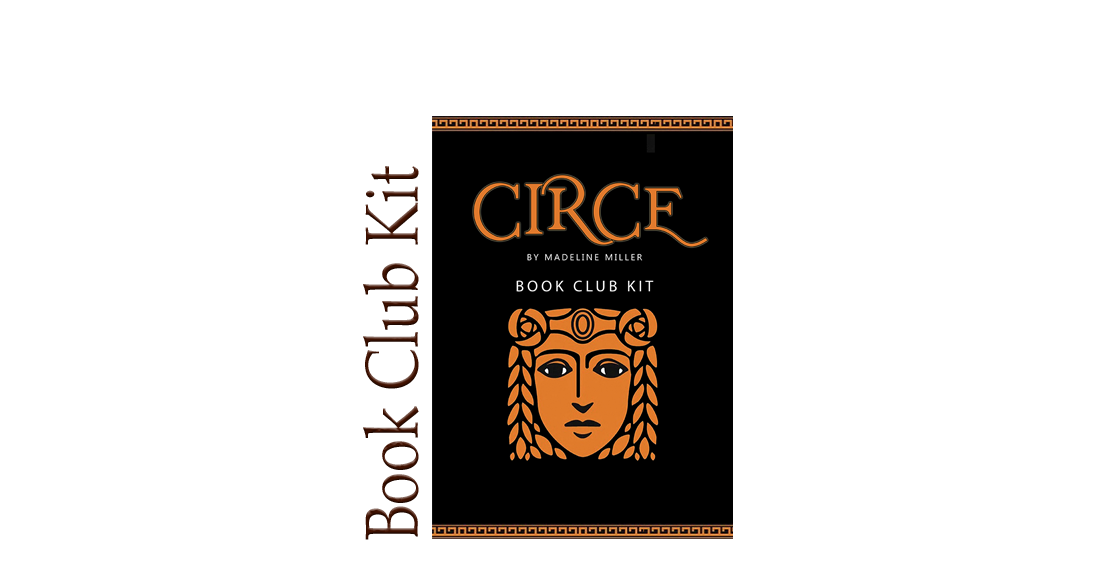
Comments